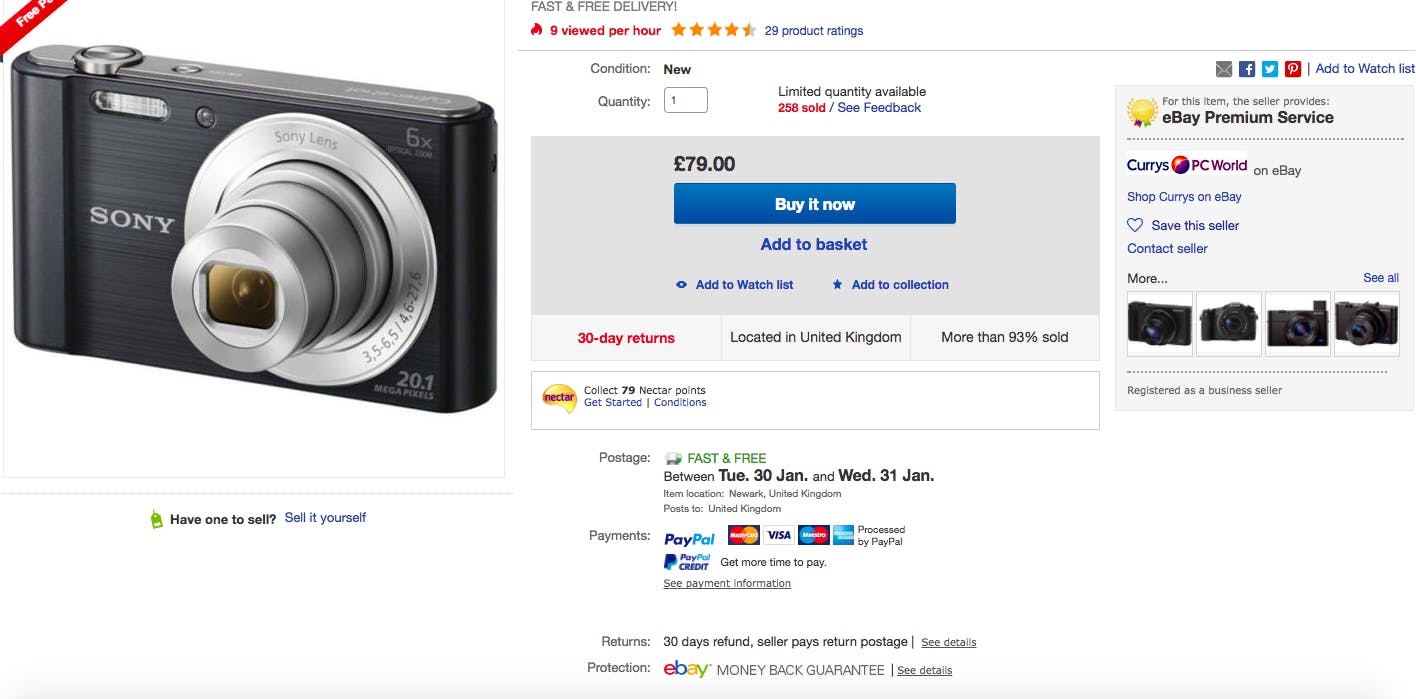A Best Practice Guide to Handling Returns
One key service that customers look for when shopping online is your returns policy and process
Why having a good returns policy is important
In recent years consumer surveys have proved that online shopping is surpassing in-store buying. It’s more important than ever to make sure your website is not only running perfectly but meets all the expectations and has all the features customers expect online now. One key service that customers look for when shopping online is your returns policy and process.
Returns can often be overlooked as people feel that it’s an afterthought to the eCommerce process, however, in reality, it’s just as much part of the customer purchasing journey as anything else and shouldn’t be thought of as an afterthought. Someone who is reviewing your returns information is showing a strong signal that they are wanting to make a purchase. You need to give them confidence.
How to Prevent Online Returns
The process of returns starts at the beginning of the customer's experience, not after the product has arrived. There are actions you can take to prevent a return happening after an initial purchase.
Around 30% of all e-commerce orders end up being returned and a lot of this has to do with the product not matching the description. Ensure the products you’re selling have informative descriptions and plenty of images, displaying the different angles of the item. Even better if there’s a video alongside the product. Include sizing and dimensions and above all, be as accurate as possible. If the customer is sure of what they’re buying it will massively reduce the possibility of a return.
You should encourage customers to leave feedback on your products. Not only will this help to increase revenue because 70% will trust a recommendation from someone they don’t know but also it can help to prevent potential returns and refunds. The customer can read reviews from previous customers who have tried and tested your product and help make a more informed purchase decisions. Research shows that when shoppers know what to expect from a product from first-hand users, the likelihood of them returning those products drops substantially.
![]()
How To Write An eCommerce Returns Policy
Use terms that everyone can understand and it will be easier for customers to follow and understand your policy. Make sure it’s easy to find. It would also be useful to dedicate a whole page on your website that can explain your whole returns policy. Include things like cost (if there is a cost or if it’s free) and the return deadline.
It's normal to give a specific time frame to accept returns. So you need to define how long the customer has to make up their mind. Tell your customers if they must return the product within 30 days, 2 weeks, whatever it may be, so they’re aware.
Aside from the time frame deadline you’re allowing for returns, you also need to make sure you’re stating what is and isn’t acceptable returns conditions. Sometimes retailers don’t allow returns of certain products, such as underwear or earrings. 66% of online shoppers check a website's return policy before purchasing an item, so make it clear, not only on your returns page but also in other areas like receipts, packaging and definitely on the product page. Your customer should have every opportunity to know your returns policy before making a purchase not just after making a purchase.
For those retailers that also sell in store, not just online, it would be helpful if a customer can return-to-store. 62% of shoppers are also more likely to shop with you online if they know that a return in-store option is available. Not only does it appeal more to the customer but it will save you costs too especially if you’re part of the majority of retailers that pay for customers return shipping. The key is to keep your customers happy and minimise fuss. 70% of shoppers who return an item in-store, make another purchase when there - something else might appeal to them while there.

How To Handle Online Returns for Your Customers
Along with the item or items they ordered, customers should also get paperwork that includes details of how to return their goods if necessary. Including return labels would be ideal instead of making the customer print it out themselves from your website. If you offer free returns, make it known and clear. Equally, don’t hide any extra costs. If it's up to the customer to pay for return shipping, make that very clear. As it stands, about 75% of retailers take care of the return shipping cost for their customers.
Make the return process clear and easy for the customer. Provide clear instructions and even include a returns envelope to make sure no mistakes are made with the address. If people know they can easily return stuff then more likely to buy again in the future.
Don’t put off the customer. Just because they make a return, it doesn’t mean they won’t come back. If they have a smooth returns experience that doesn’t cost them anymore, they are much more likely to come back. But if they have to pay a hefty fee to return their unwanted items it could put them off permanently. The way your business handles a return can either build a stronger relationship with a customer or lose them for life.

eCommerce Returns Policy Examples
As we can see with this ebay.co.uk example, they have clarified their returns information on the product page, right beside the product. This can make the customer feel at ease as they know how much time they have to return and get their money back if unhappy. In this example, it’s 30 days refund, seller pays postage.
The clear display of return information (not only how long they have but also how whether they have to cover the cost or not) will likely seal the deal with the customer as they now have the confidence they need to go through with the purchase.

In the example, you can also see that the reviews are also clearly visible. The customer gets to see an overall rating for that product and this information can help them make up their mind about the item and now know what to expect from a product from first-hand users.
Handling Returns Final Roundup
The best practice when handling returns is to include a free returns label for your customer and be part of the majority 75% of businesses that do so, they will appreciate this.
Do not make the process of returns any longer or more complicated than it should be with the idea that it may deter a customer from sending back their items. All this will do is put them off buying from you in the long run. However with a good returns policy and process, the customer is satisfied and more likely to return, knowing that your business operates in a smooth and hassle-free manor.
If you've enjoyed reading this article and would like to discuss your next project in more detail with us please Contact Us or give us a call on01233 800 991.